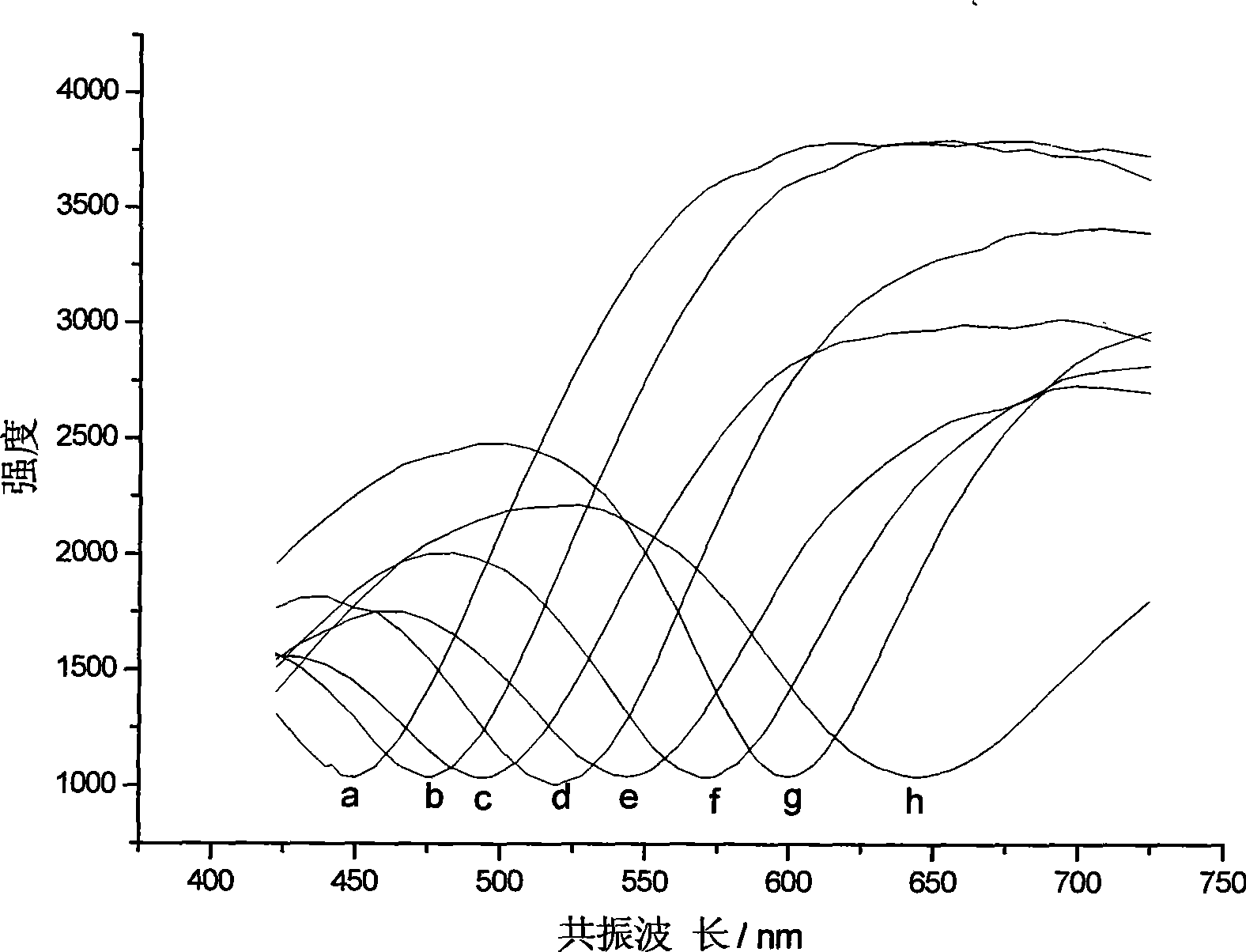Sensing element based on titanic oxide embedding technology and manufacturing method thereof
A technology of titanium dioxide and sensing elements, which is applied in the field of sensors for biological system detection, can solve the problems of low sensitivity, easy inactivation of biomolecules, and long film forming time, etc., and achieve a wide range of applications
- Summary
- Abstract
- Description
- Claims
- Application Information
AI Technical Summary
Problems solved by technology
Method used
Image
Examples
Embodiment 1
[0028] Embodiment 1 The sensor element structure used in the surface plasmon resonance sensor of the present invention and the comparison with the sensor element structure of the background technology.
[0029] figure 1 It is a structural schematic diagram of the sensing element in the background technology. figure 1 Among them, 1 is a glass prism, 2 is a metal film, 3 is a carboxy-terminally acylated 3-mercaptopropionic acid (MPA) film, and 4 is a rabbit anti-human IgG film. ( ) is the antibody, ( ) is an antigen.
[0030] Figure 5 It is a schematic diagram of the sensing element based on the titanium dioxide embedding technology of the present invention. Figure 5 Among them, 1 is a glass prism, 2 is a metal film, 5 is the first layer of titanium dioxide film, 6 is the second layer of titanium dioxide film (embedded gold nanoparticles), 7 is the third layer of titanium dioxide film (embedded coupled with rabbit anti-human IgG gold nanoparticles). ( )Antibody,( ...
Embodiment 2
[0032] Example 2 Fabrication of the sensing element of the present invention.
[0033] The gold nanoparticles used in the experiment were prepared in the following manner: all glass instruments used were soaked in aqua regia for 24 hours and washed with double distilled water. All solutions used need to be filtered through a 0.22 μm semi-permeable membrane before use. Under constant stirring, heat 100mL of 0.01% chloroauric acid to boiling, then add 4mL of 1% sodium citrate, and continue stirring and heating for 10 minutes. During this process, the solution turns from colorless to wine red. The preparation of the gold nanoparticles can be completed when the measured ultraviolet absorption peak of the solution is at 519.7 nm.
[0034] The gold nanoparticles are coupled with the rabbit anti-human immunoglobulin, and the rabbit anti-human immunoglobulin is added to the prepared gold nanoparticles under vigorous stirring and incubated at room temperature; centrifuged; and phospha...
Embodiment 3
[0038] Example 3 Antigen detection (1).
[0039] Fix the prism, inject double-distilled water and PBS into the flow cell, and rinse until the SPR resonance wavelength is stable. Inject different concentrations of human IgG into the flow cell sequentially, and record the change of SPR resonance wavelength with time. Due to the specific combination of rabbit anti-human IgG and human IgG, the SPR resonance wavelength shifts to the long-wave direction, and different concentrations of human IgG correspond to The resonance wavelength shift is also different. Each concentration of human IgG can react with rabbit anti-human IgG to reach equilibrium within 30 minutes. After each sample was monitored, PBS buffer was injected to rinse the flow cell. After the measurement, the sensing element needs to be stored in PBS and kept at 4°C.
[0040] figure 2 The relationship curves of human IgG concentration and resonance wavelength shift corresponding to the two sensitive membranes are gi...
PUM
 Login to View More
Login to View More Abstract
Description
Claims
Application Information
 Login to View More
Login to View More - R&D
- Intellectual Property
- Life Sciences
- Materials
- Tech Scout
- Unparalleled Data Quality
- Higher Quality Content
- 60% Fewer Hallucinations
Browse by: Latest US Patents, China's latest patents, Technical Efficacy Thesaurus, Application Domain, Technology Topic, Popular Technical Reports.
© 2025 PatSnap. All rights reserved.Legal|Privacy policy|Modern Slavery Act Transparency Statement|Sitemap|About US| Contact US: help@patsnap.com



